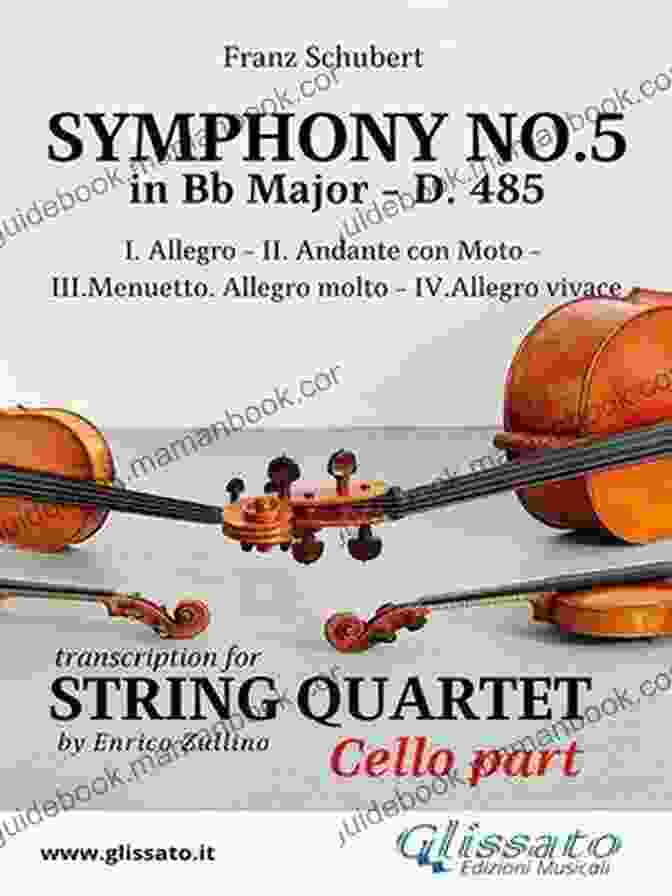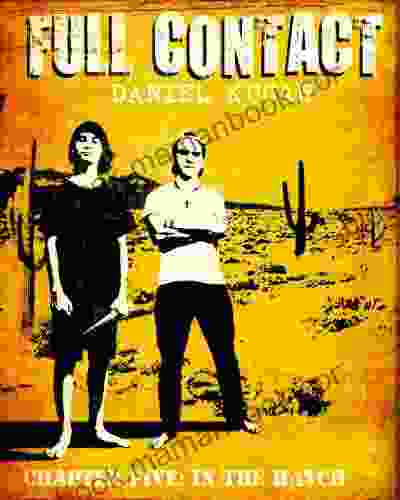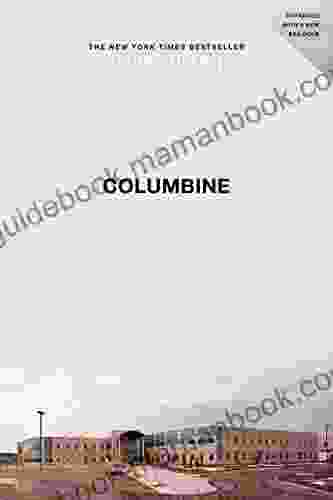Symphony No. 485 for String Quartet Viola: A Comprehensive Analysis and Appreciation


Symphony No. 485 for String Quartet Viola, composed by Wolfgang Amadeus Mozart in 1782, is a remarkable chamber music composition that showcases the depth and brilliance of the composer's genius. It is a complex and sophisticated work that explores a wide range of emotions and musical ideas. This article will provide a comprehensive analysis and appreciation of Symphony No. 485, examining its structure, themes, and the unique role of the viola in the quartet.
Structure
Symphony No. 485 is a four-movement work in the traditional classical sonata form. The movements are as follows:
4.2 out of 5
| Language | : | English |
| File size | : | 8667 KB |
| Screen Reader | : | Supported |
| Print length | : | 17 pages |
| X-Ray for textbooks | : | Enabled |
1. Allegro 2. Andante 3. Menuetto: Allegretto 4. Allegro vivace
The first movement, Allegro, sets the tone for the symphony with its lively and energetic tempo. The movement is in sonata form, featuring two main themes. The first theme is introduced by the viola, with the other instruments providing accompaniment. The second theme is more lyrical and sweeping, played by the violins in their higher register. The development section explores and transforms the thematic material, modulating through various keys. The movement concludes with a recapitulation of both themes and a brilliant coda.
The second movement, Andante, provides a striking contrast to the first movement with its slow and serene tempo. The movement is in ternary form, featuring a lyrical A section, a contrasting B section, and a return to the A section. The viola plays a prominent role in this movement, carrying the main melody in the A section and providing a gentle accompaniment in the B section. The movement concludes with a tranquil coda, creating a sense of peace and reflection.
The third movement, Menuetto: Allegretto, is a lively and playful dance movement. The movement is in ternary form, featuring a contrasting trio section in the middle. The viola plays a prominent role in the trio section, leading the melody with a graceful and intricate line. The movement concludes with a spirited return to the main menuetto theme.
The fourth movement, Allegro vivace, is a fast and energetic finale. The movement is in sonata form, featuring two main themes. The first theme is introduced by the viola, with the other instruments providing a rhythmic accompaniment. The second theme is more lyrical and sweeping, played by the violins in their higher register. The development section explores and transforms the thematic material, modulating through various keys. The movement concludes with a recapitulation of both themes and a brilliant coda.
Themes
Symphony No. 485 explores a wide range of themes and emotions. The first movement presents a strong and energetic theme, while the second movement offers a contrasting theme of lyricism and serenity. The third movement introduces a lively and playful dance theme, while the fourth movement returns to a more energetic and triumphant theme.
Throughout the symphony, the viola plays a significant role in carrying the main themes and providing melodic support. The viola's warm and rich tone lends a unique character to the overall sound of the quartet.
The Role of the Viola
The viola holds a special place in Symphony No. 485. Unlike in many other chamber music works where the viola often plays a supporting role, in this symphony, it is given a more prominent and independent voice. The viola introduces the main theme in the first movement, carries the melody in the second movement, and leads the trio section in the third movement.
The viola's unique sound and extended range allow it to explore a wide range of expressive possibilities. In Symphony No. 485, the viola provides a rich and warm foundation for the other instruments, while also contributing its own distinct melodic lines and harmonic colors.
Symphony No. 485 for String Quartet Viola is a masterpiece of chamber music that showcases the depth and brilliance of Mozart's genius. Its complex and sophisticated structure, memorable themes, and the unique role of the viola make it a captivating and rewarding work to listen to and appreciate. Symphony No. 485 continues to be performed and recorded by renowned string quartets worldwide, ensuring its enduring legacy as one of the greatest works in the classical repertoire.
4.2 out of 5
| Language | : | English |
| File size | : | 8667 KB |
| Screen Reader | : | Supported |
| Print length | : | 17 pages |
| X-Ray for textbooks | : | Enabled |
Do you want to contribute by writing guest posts on this blog?
Please contact us and send us a resume of previous articles that you have written.
 Top Book
Top Book Novel
Novel Fiction
Fiction Nonfiction
Nonfiction Literature
Literature Paperback
Paperback Hardcover
Hardcover E-book
E-book Audiobook
Audiobook Bestseller
Bestseller Classic
Classic Mystery
Mystery Thriller
Thriller Romance
Romance Fantasy
Fantasy Science Fiction
Science Fiction Biography
Biography Memoir
Memoir Autobiography
Autobiography Poetry
Poetry Drama
Drama Historical Fiction
Historical Fiction Self-help
Self-help Young Adult
Young Adult Childrens Books
Childrens Books Graphic Novel
Graphic Novel Anthology
Anthology Series
Series Encyclopedia
Encyclopedia Reference
Reference Guidebook
Guidebook Textbook
Textbook Workbook
Workbook Journal
Journal Diary
Diary Manuscript
Manuscript Folio
Folio Pulp Fiction
Pulp Fiction Short Stories
Short Stories Fairy Tales
Fairy Tales Fables
Fables Mythology
Mythology Philosophy
Philosophy Religion
Religion Spirituality
Spirituality Essays
Essays Critique
Critique Commentary
Commentary Glossary
Glossary Bibliography
Bibliography Index
Index Table of Contents
Table of Contents Preface
Preface Introduction
Introduction Foreword
Foreword Afterword
Afterword Appendices
Appendices Annotations
Annotations Footnotes
Footnotes Epilogue
Epilogue Prologue
Prologue Daniel Kucan
Daniel Kucan Leeanna Morgan
Leeanna Morgan Joyce Moore Gaulden
Joyce Moore Gaulden Ben Slotznick
Ben Slotznick Paul Hoover
Paul Hoover Gary Blinco
Gary Blinco Octavia E Butler
Octavia E Butler Katherine Mader
Katherine Mader Marc Cameron
Marc Cameron Matthew Shenoda
Matthew Shenoda William Mcdonough
William Mcdonough Ling Ma
Ling Ma Kayti Lynna Breeze
Kayti Lynna Breeze Jennifer Khedr
Jennifer Khedr Bestwriters Club
Bestwriters Club Christina Bennett
Christina Bennett Meadoe Hora
Meadoe Hora Alexander Kofinas M D
Alexander Kofinas M D Rebekka Weber
Rebekka Weber Jeff Lestz
Jeff Lestz
Light bulbAdvertise smarter! Our strategic ad space ensures maximum exposure. Reserve your spot today!

 Edgar CoxA Glimpse into the Lives of the Concho Folks: Captivating 1800s Fiction Short...
Edgar CoxA Glimpse into the Lives of the Concho Folks: Captivating 1800s Fiction Short...
 George BellApplying the Principles and Lessons of Chartering New Frontiers in Education:...
George BellApplying the Principles and Lessons of Chartering New Frontiers in Education:... Neal WardFollow ·17.6k
Neal WardFollow ·17.6k Arthur Conan DoyleFollow ·18.9k
Arthur Conan DoyleFollow ·18.9k Floyd PowellFollow ·12.6k
Floyd PowellFollow ·12.6k Roald DahlFollow ·17.1k
Roald DahlFollow ·17.1k Andy HayesFollow ·3.7k
Andy HayesFollow ·3.7k Brady MitchellFollow ·18k
Brady MitchellFollow ·18k Asher BellFollow ·2.7k
Asher BellFollow ·2.7k Desmond FosterFollow ·15.3k
Desmond FosterFollow ·15.3k

 Leslie Carter
Leslie CarterWhat We Must Do Now To Save Reproductive Freedom
Roe v. Wade, the landmark...

 Cade Simmons
Cade SimmonsThe Unbreakable Bond: Unveiling the Connection Between...
In the realm of...

 Roy Bell
Roy BellFull Contact Chapter Five: The Final Chapter of the Hatch...
In this gripping to the Hatch saga, we...

 Fred Foster
Fred FosterUnveiling the Tale of the Genpei Wars: A Comprehensive...
Deep within the annals of Japanese history,...

 Jaden Cox
Jaden CoxFerguson in Black and White: A Profound Examination of...
The Ferguson tragedy, sparked by the fatal...
4.2 out of 5
| Language | : | English |
| File size | : | 8667 KB |
| Screen Reader | : | Supported |
| Print length | : | 17 pages |
| X-Ray for textbooks | : | Enabled |










